Abstract
The city is represented as de-wilded and re-ordered spaces where savage wilderness is bulldozed over and transformed into ‘cultured’ landscapes. Physical and metaphorical boundaries delineate precise spatial order and division between human and wildlife spaces perpetuating the construct of socio-spatial belonging. Yet, overcoming ecological barriers, synanthropic species triumphed over the prescribed urban grid, spilling over into the everyday anthropogenic spaces. Against the geographical and ideological boundaries, these movements against the grain of urban design are interpreted as the transgressions of species boundaries. With the city’s taxonomic absolutism in spatial design, the transboundary movement of animals has inevitably escalated human-wildlife intolerance and conflict.
Wild Neighbours challenges this spatial fetishism through its visualization of privately-owned wildlife habitat – the allocation of green nodes and networks within privatized plots. Concurrently, the architecture responds by envisioning a trans-species facade system through the interweaving of habitat niches along its facade. The newfound architecture therein reimagines a trans-species conviviality space where different life forms may flourish in an intimate yet respectful proximity.
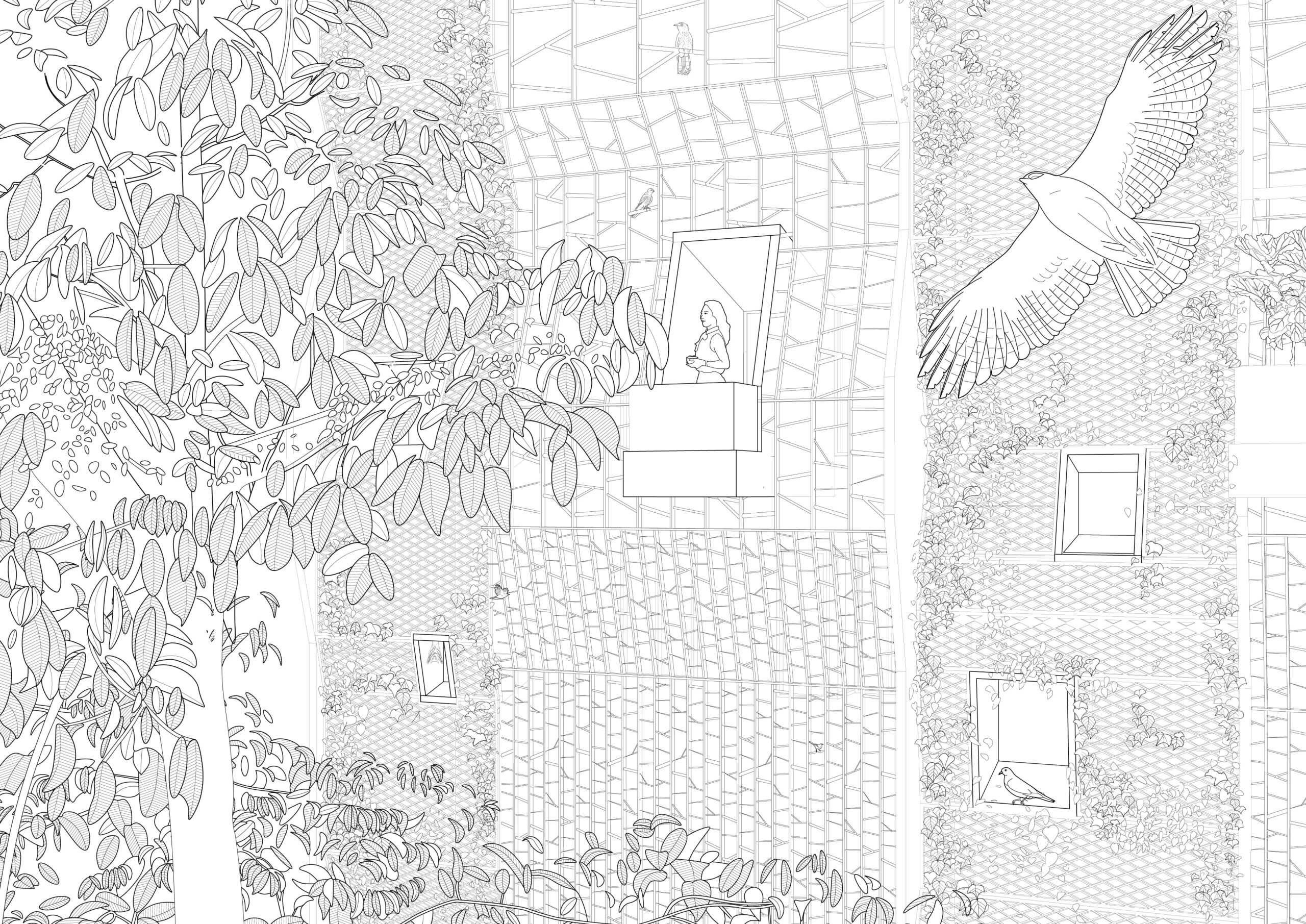
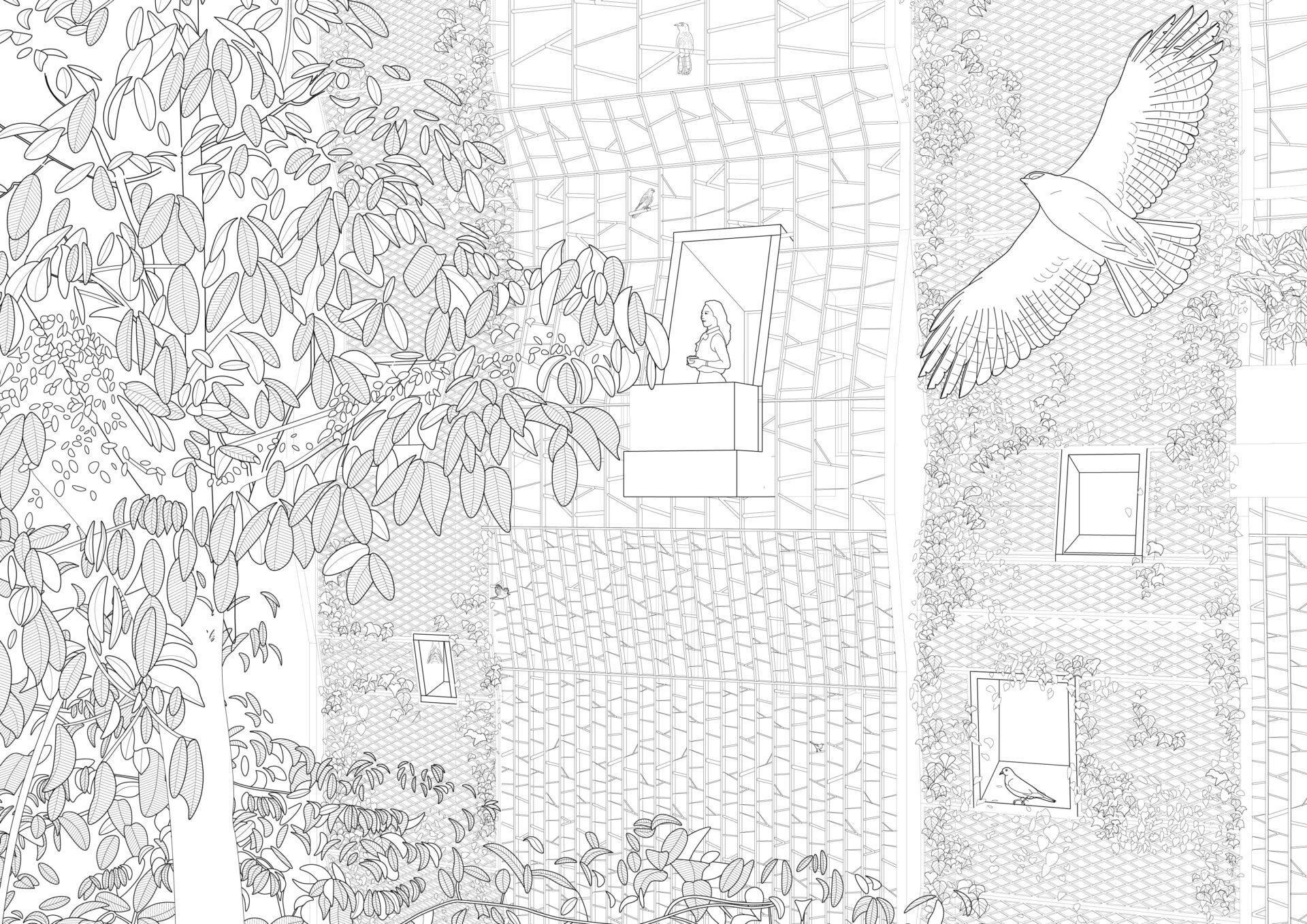
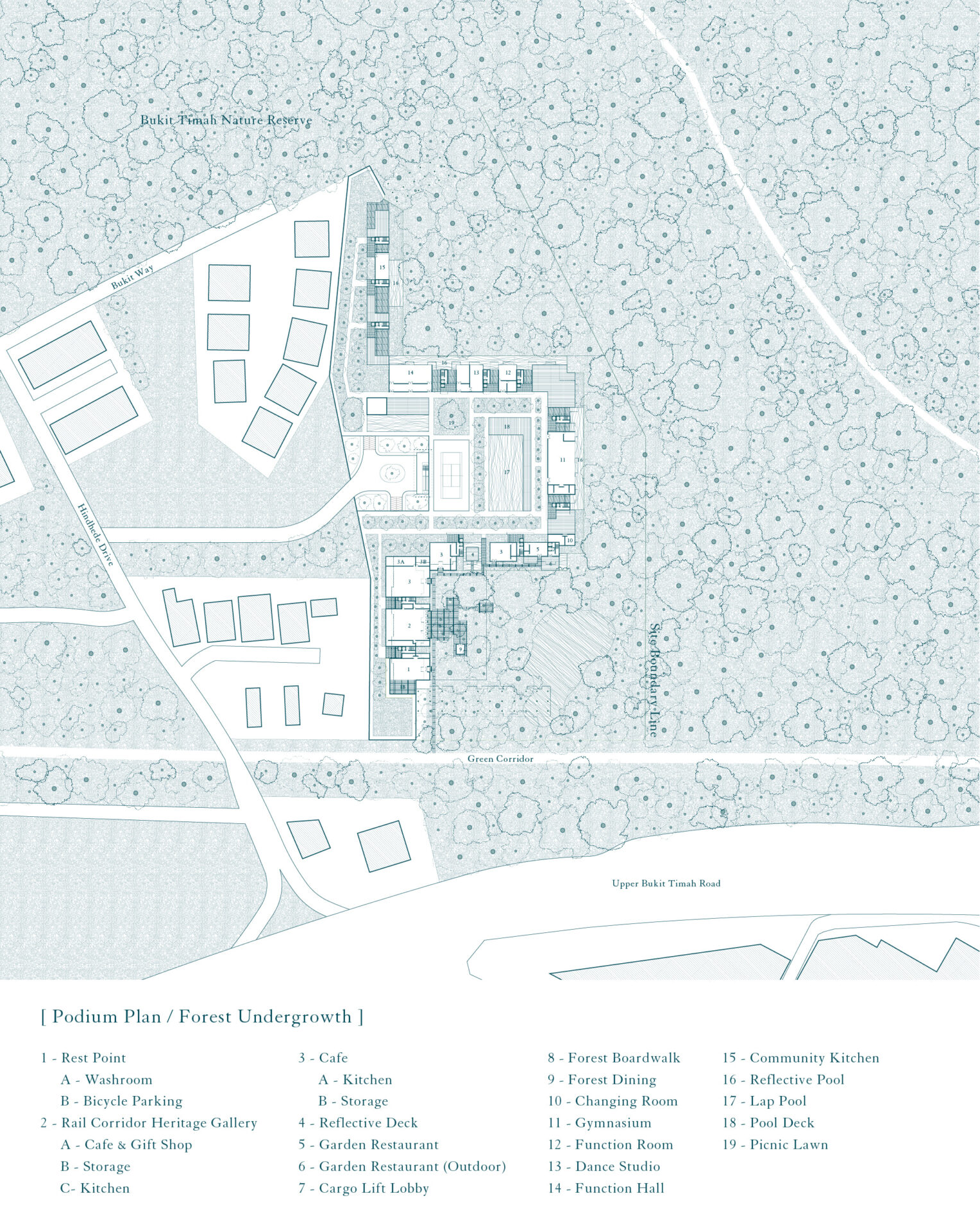
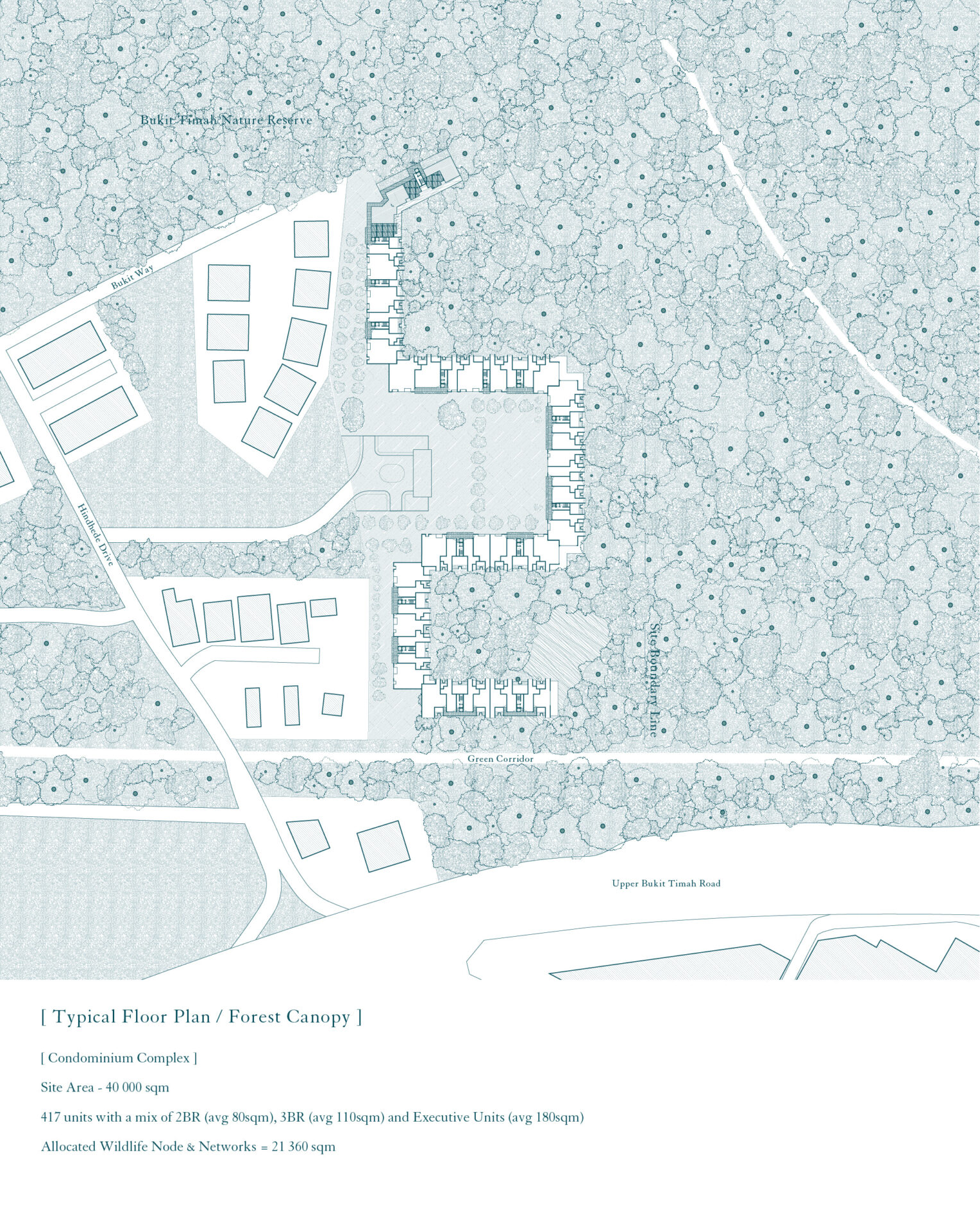
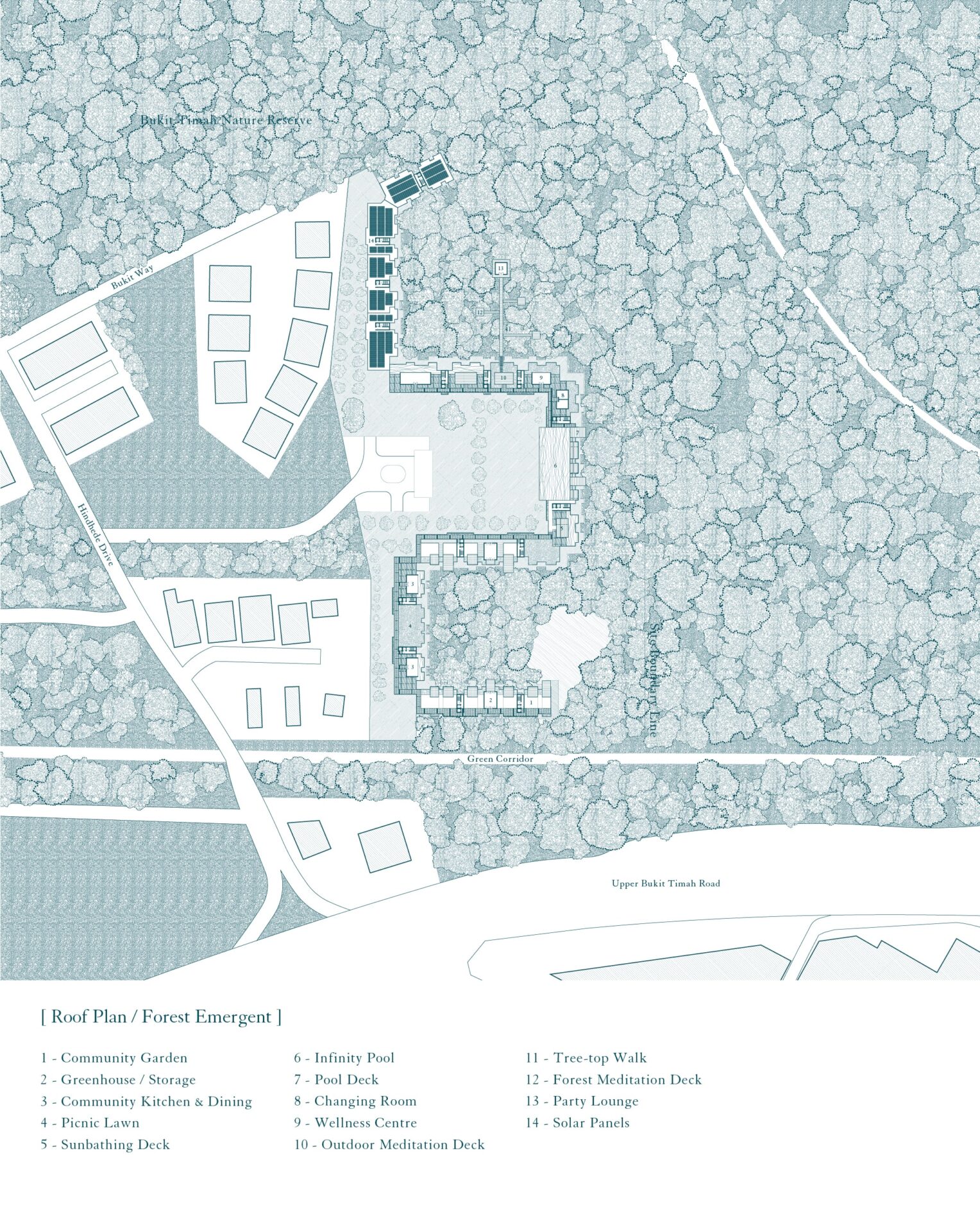


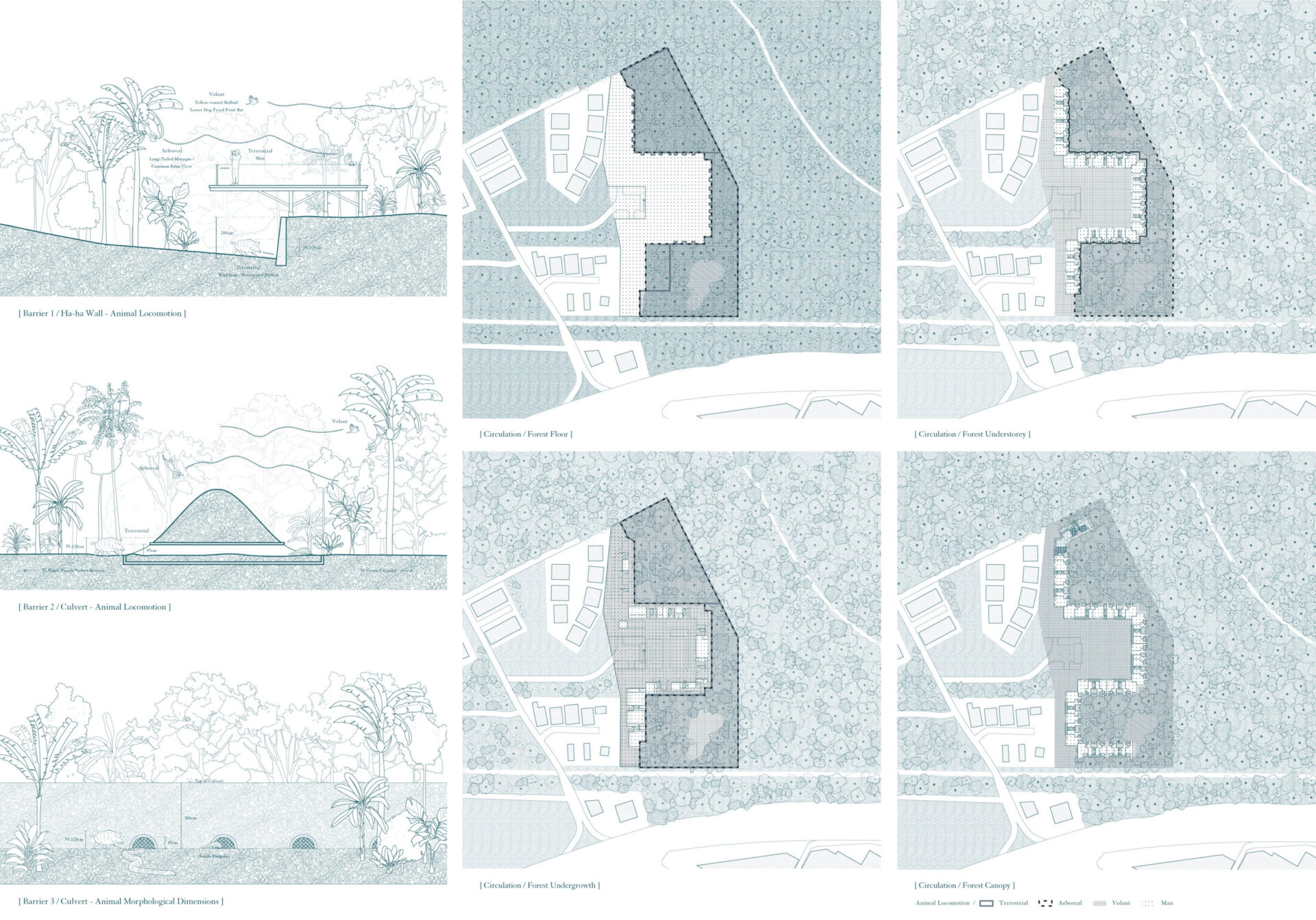

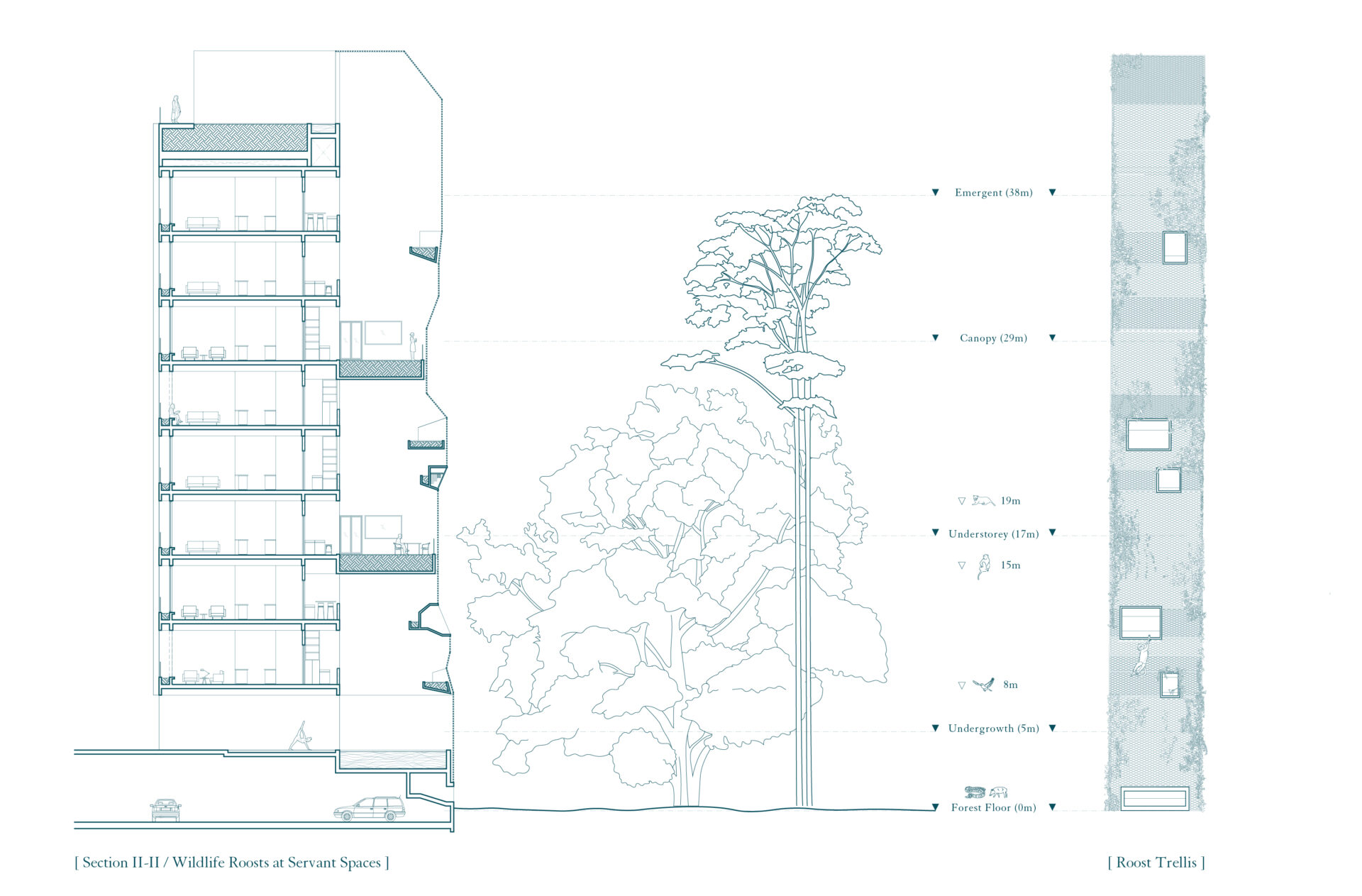
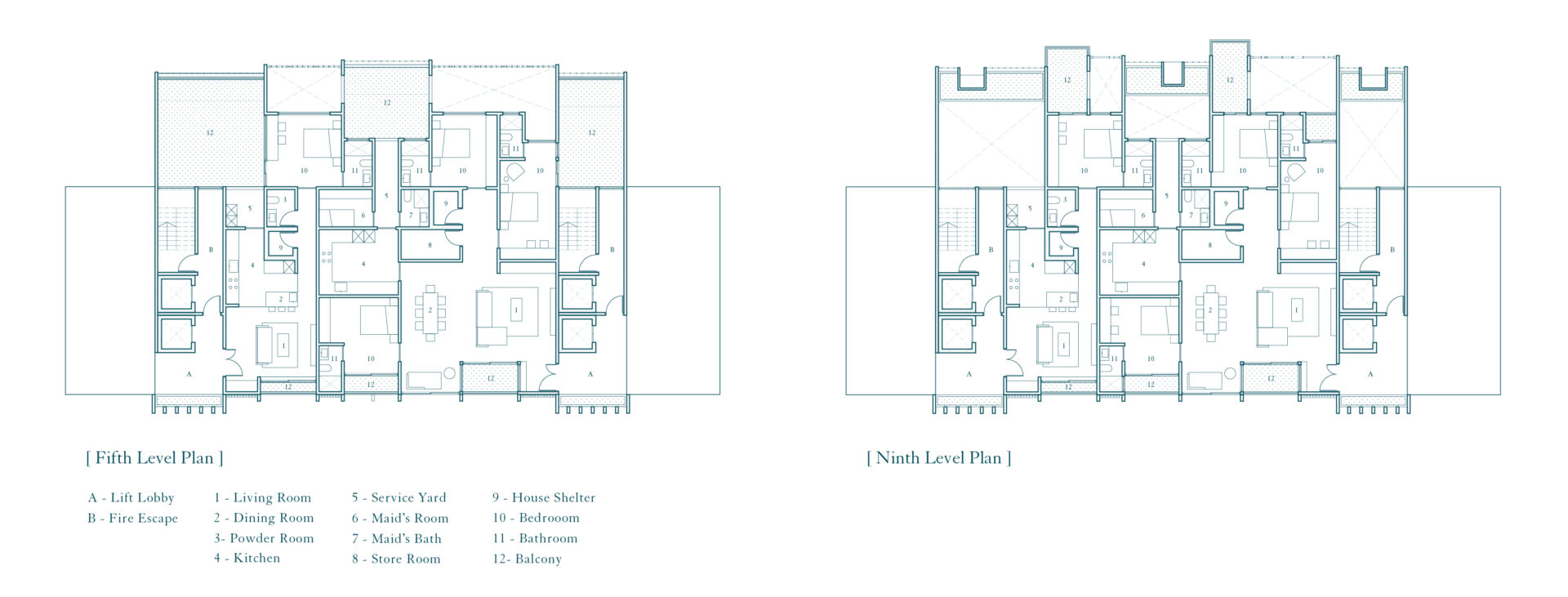
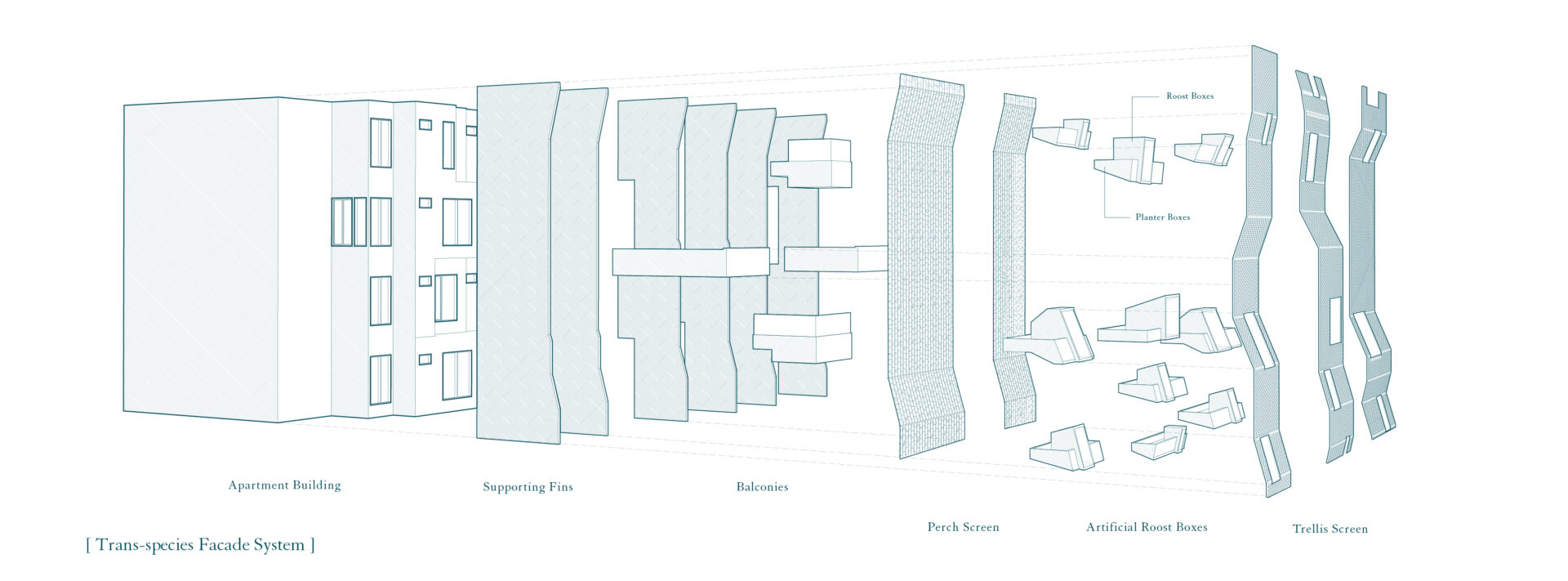
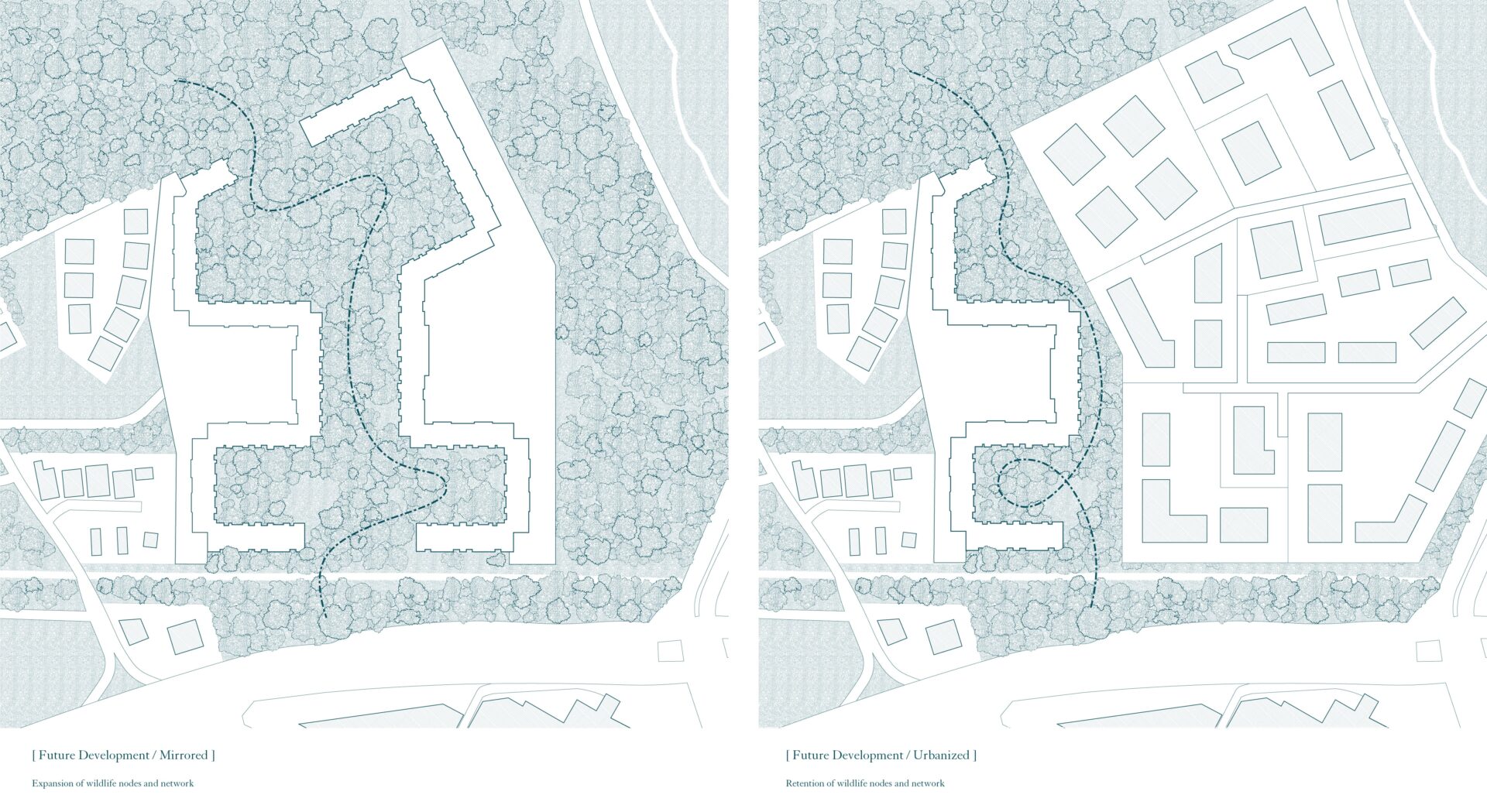
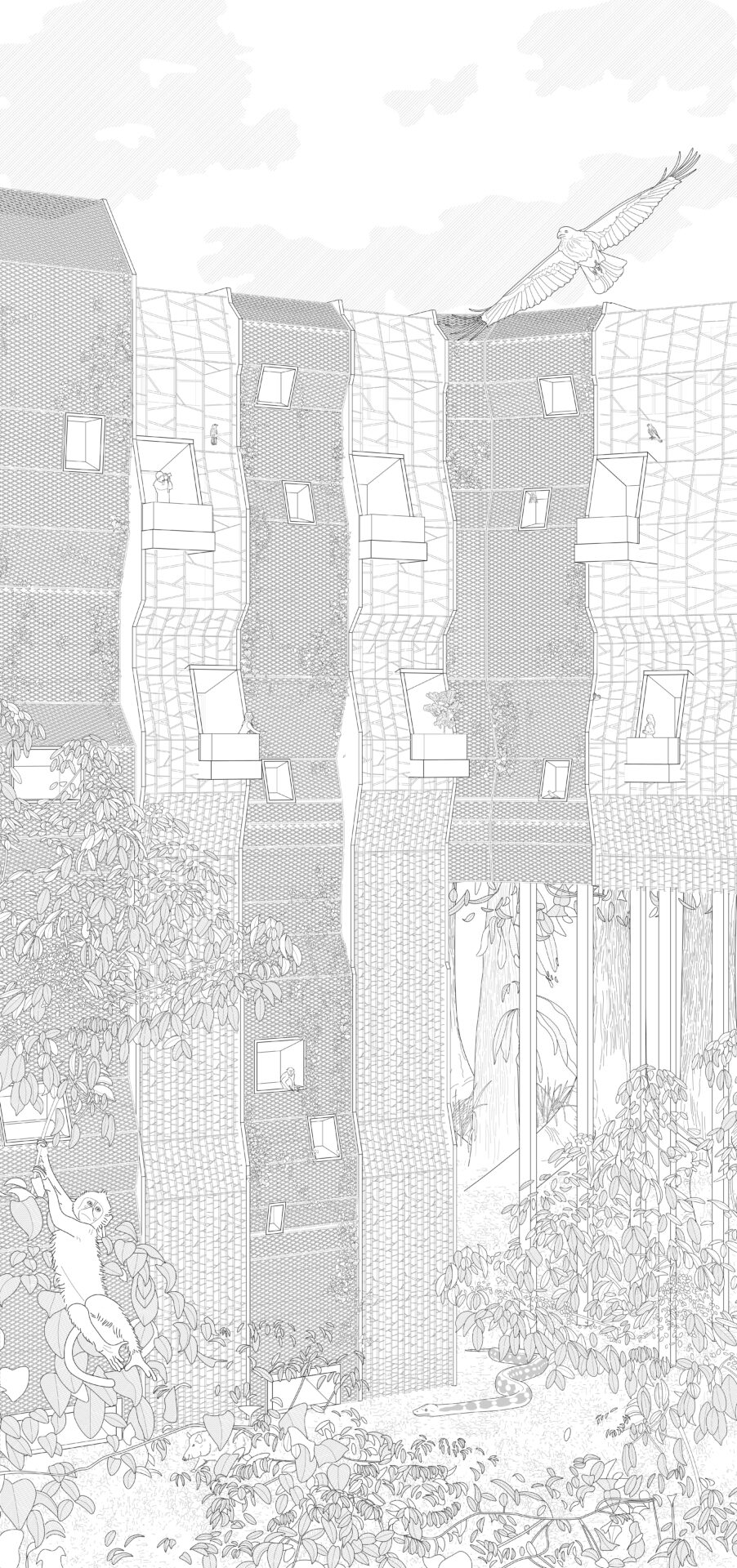
Supervisor's comments:
‘Ecotone’ is an edge or buffer between adjacent ecosystems. Yiling Kirk asks if architecture, on the fringe of urban settlements, might act as an ecotone, bridging human and non-human habitats. The site is on the periphery of the Bukit Timah Nature Reserve; the brief is a residential development of about 417 apartment units – a large condominium by Singapore standards. Here, Yiling positions built form as an intentional duality: separating humans from some wildlife – snakes and wild boars – and creating shared space with others – birds and small mammals. The facade that faces the Reserve is the innovation here, asking why we must choose between built or natural. Why not both?
- Assoc. Prof. Nirmal Tulsidas Kishnani (Dr.)